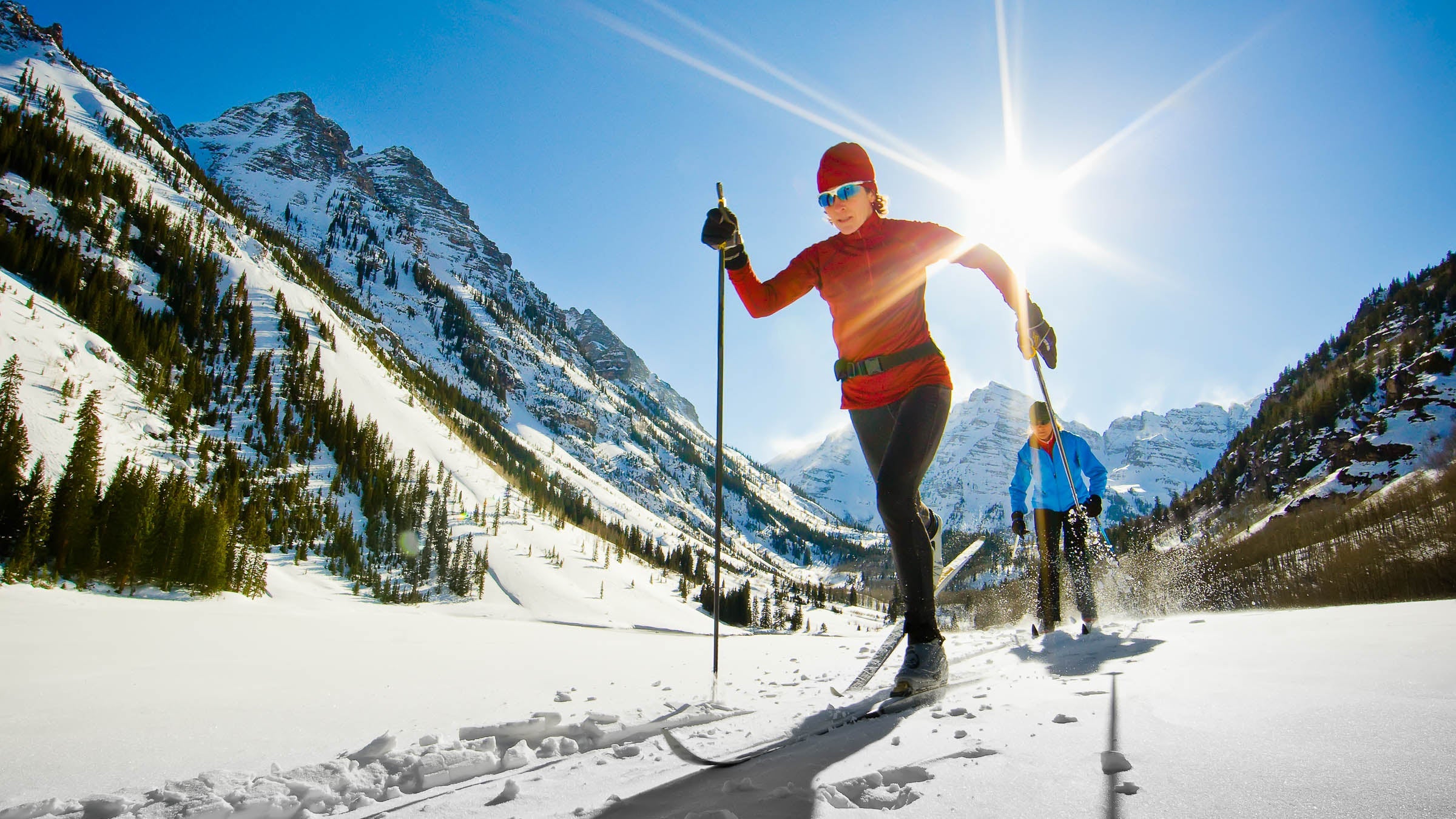We’re runners. We love to run. Still, cross training, as we know, is good for us. And if you live someplace where snow blankets the ground in the winter and have access to a Nordic center, or to flat or rolling, snowy terrain that might be groomed by your local Nordic club, cross-country skiing is a fantastic complement to trail running.
Just ask Morgan Arritola, three-time member of the U.S. National Cross Country Ski Team and 2010 Olympian, and four-time member of the U.S. Mountain Running Team. “Cross-country skiing offers a full-body way of staying in shape for running,” says Arritola. “The neuromuscular training you get from cross-country is top tier.”
If you’ve ever tried the sport, you’ve experienced this first hand: every muscle from your feet to your neck gets a workout, not to mention the extreme cardiovascular effort required to glide across snow.
Nathan Schultz, owner of Boulder Nordic Sport who’s placed on the podium at trail running races like the Pikes Peak Ascent and Imogene Pass Run agrees. “Nordic skiing is a great compliment to trail running,” he says. “The big difference is that skiing takes the impact of running away, but still builds muscle and cardiovascular fitness.”
Arritola, remarkably, has never had an overuse injury. She chalks that up to ski training in the winter instead of running year-round.
Which Discipline Is Best?
The term “Nordic skiing” is synonymous with “cross-country skiing,” though, technically, the discipline of ski jumping (athletes hucking themselves through the air off steep jumps as you see in the Olympics) also falls under “Nordic skiing.” For those of us who’d like to stay connected to the ground, cross-country skiing is split between classic and skate skiing, with different gear and motions separating the two.
Classic skiing is done mostly in groomed tracks, with skis staying parallel to each other. Forward momentum is gained by the skier kicking and gliding: “kicking” by putting their weight over the “kick zone” of the ski, which is located directly under the boot/binding, and gliding. “Typically, classic skiing uses a more similar motion and similar muscles to running than does skate,” says Schultz. “If you’re looking for a direct transfer, then classic skiing is more specific to running.” Schultz says that classic skiing works the hip flexors more than skate, and when done correctly, can engage more upper body and core. And classic skiing engages the hamstrings and calves more than does skate skiing; those muscles are required to propel forward in a classic stride.
“If you’re looking for something to help you stay in shape for running and build those muscles, without the impact of running, then classic is a good choice,” he says.
But, warns Arritola, the classic stride can be harder to master. “For novice skiers, classic seems easier,” she says. “People equate it with walking, but that’s not good technique.” And walking on classic skis, as opposed to properly kicking and gliding, doesn’t give you the cross-training benefits you may be looking for to compliment your running.
Skate skiing mimics the motion of ice- or roller-skating. A skier propels themselves forward by pushing off the inside edge of each ski while planting and pushing with their poles. Schultz says that skate skiing engages glutes and quads more than the classic stride. “It’s a complimentary motion,” he says. With skate skiing, you work lateral muscle strength and stability. “It builds a little more of the small balance muscles in the lower leg,” he says. “But both classic and skate are gonna help build muscles used for balance when running.”
Skate skiing can be more intuitive for beginners, though still very challenging. And unlike classic skiing, it’s nearly impossible to cruise at a walking pace on skate skis. In order to move forward, an athlete needs to actually push off hard on each ski, making skate skiing—even bad skate skiing—a challenging workout right off the bat.
“In an ideal world, you’d do both,” says Arritola, who acknowledges that investing in both gear set-ups is expensive.
Another Massive Benefit
Another benefit to taking up either discipline of cross-country: toughness. Not only are both skating and classic physically demanding, but heading outside for workouts in the winter months, in all sorts of conditions, builds mental strength that carries over into other sports.
“Cross country skiers are pretty tough in general,” says Arritola. “We ski in not-nice weather, and not-nice conditions. But you just put your head down and do it. That’s really good for trail running.”
Arritola says she’s done 4-hour ski sessions on a 1-km loop in a blizzard. “That’s what was available. You get tough.”
“I learned to just kind of roll with things like that. It makes you a little more able to adapt to things you can’t control. I think that mental aspect is ultimately the most important crossover.”


